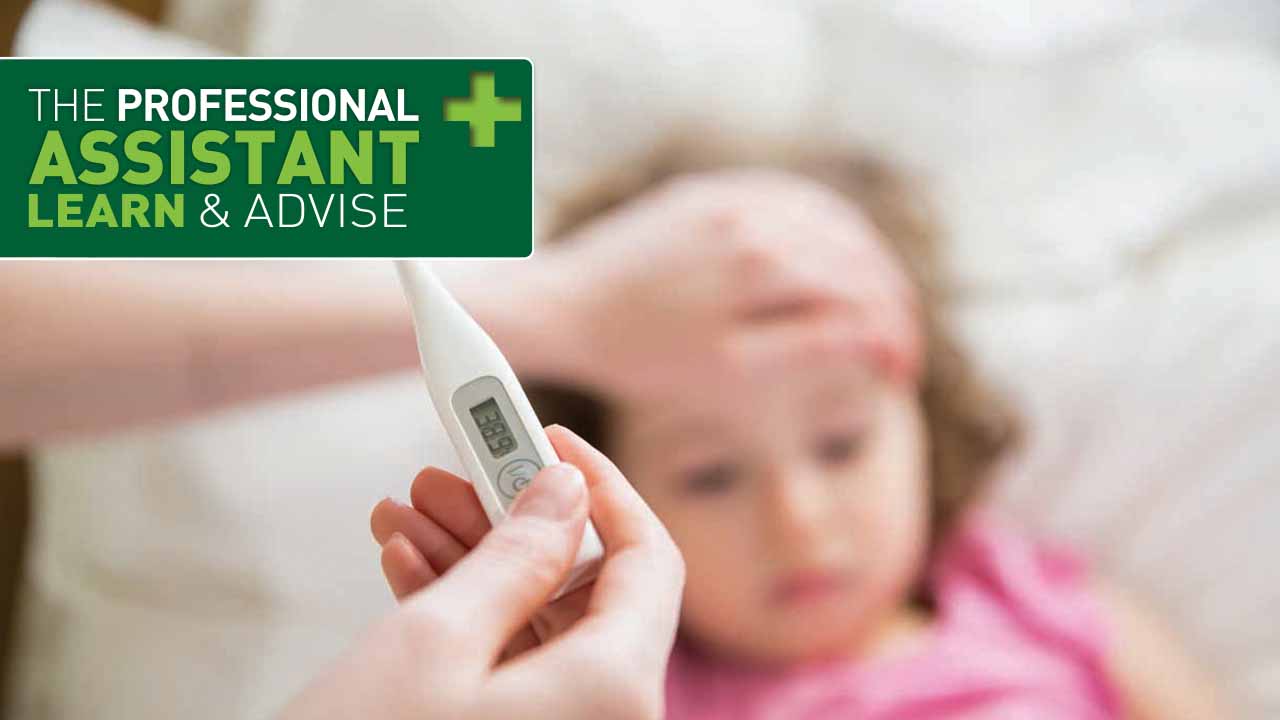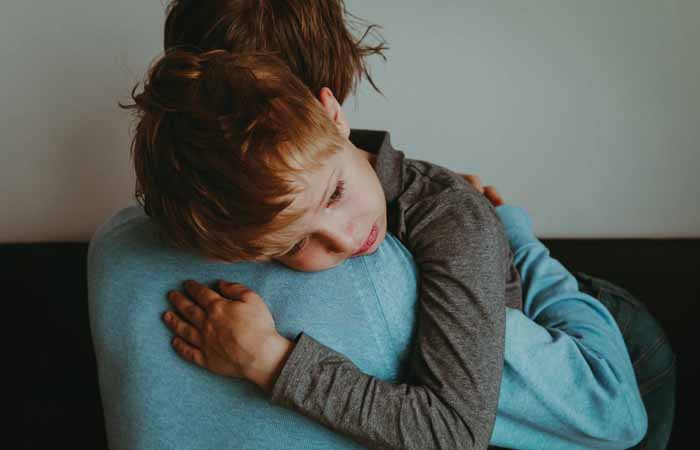In OTC
Bookmark
Learning objectives
After studying this module, assistants will:
- Know the signs and symptoms of pain and fever in children
- Be aware of what can cause pain and fever in children
- Understand when to refer a customer to the pharmacist
- Feel confident recommending appropriate treatment and self care options.
Pharmacy teams should be comfortable managing children with signs of pain and/or fever.
Pain
Pain is the body’s way of indicating that something is wrong. There are different types of pain, from dull and aching to sharp and acute. It can be hard to describe pain, especially for young children, who may not have the language to explain how they are feeling. Having a good understanding of why a child might feel pain will help pharmacy teams offer the best advice to parents and carers.
Pain is controlled by the nervous system via the following pain pathways:
- Nerve endings called nociceptors detect damage in the body, which could be either internal or external
- Nociceptors send pain signals to the brain via the spinal cord to let it know that something isn’t right
- Tissues around the damaged area release compounds called prostaglandins, which make the pain signals to the brain stronger by causing inflammation. This can also cause visible signs such as redness and swelling.
Fever
Normally, a child’s temperature will be around 36.4°C, although this can vary slightly between individual children. A child is said to have a fever when their temperature is 38°C or more.
A fever is the body’s natural response to fighting infections such as coughs, colds and flu. It is common among children, who may display signs such as hot, flushed cheeks, feeling hotter to the touch than usual or feeling clammy. They may also look or feel unwell.
Prostaglandins play a role here, too. As well as sending pain signals to the brain, prostaglandins also act on the brain’s temperature-regulating centre, causing the body’s temperature to rise above normal.
Temperature can be checked using a thermometer, and there are a range of different types available including digital thermometers and digital ear thermometers. Glass thermometers and forehead strips should not be used as the former can be dangerous and the latter inaccurate.
If a thermometer isn’t available, a high temperature can be checked by touching the individual’s chest and back – if they feel hotter than usual then they may have a high temperature. Contrary to popular belief, touching the forehead isn’t an accurate way of checking temperature.
Did you know?
In the first three to four years of a child’s life, they will catch an average of six to eight colds a year.


